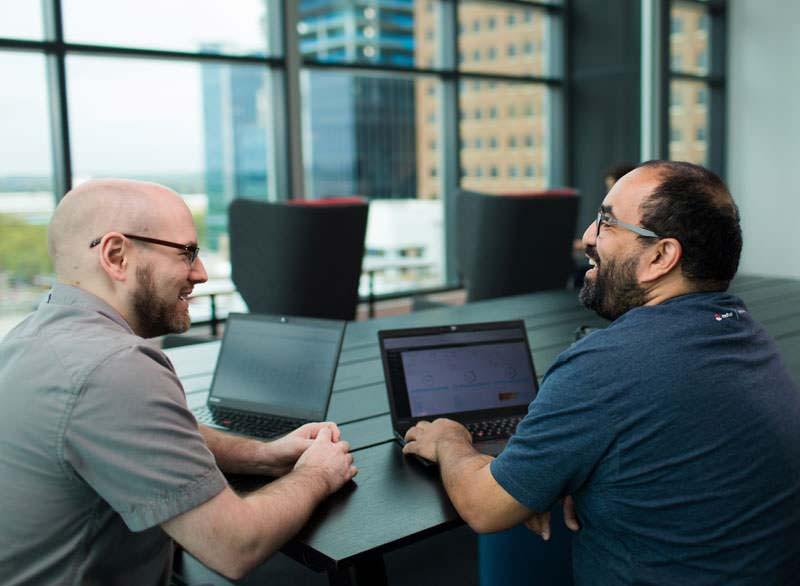What is organizational culture?
At its core, open organizational culture exists when open core values and principles both represent and reinforce an organization’s culture through processes, communication, structures, and even technologies.
Most leaders today rely on a more hierarchical corporate culture to run their day-to-day operations. But by working from the top down, they may be missing out on the collaboration, communication, and innovation that often come with working in an environment that supports an open organizational culture. Learn how embracing this type of company culture—where transparency, inclusivity, and adaptability rule—can help spur new ideas at every level.

How else is it defined?
As a concept, it should be noted that open culture can also refer to a broader social and political movement focused on opening access to cultural artifacts and resources. Open culture advocates, for example, will champion things like the use of Creative Commons licenses for making creative works more accessible, the digitization of texts so they’re accessible to new audiences and the visually impaired, the funding of institutions like the Internet Archive that democratize access to cultural artifacts, and legislation that curtails excessive copyright protections.
Some consider open source—with its emphasis on accessible source code—to be a subset of the broader open culture movement. The same is true for open organizational culture.
What are the types of organizational culture?
While every organization's culture can look different based on its organizational structure, mission statement, and other factors, open environments share one characteristic: All members of the organization—from company leaders to individual team members—adopt these core values and principles. It's these shared values that contribute to a strong culture—and an enhanced employee experience.
In an open work environment, company leaders practice inclusivity as a way to open channels of communication across departments and boost employee engagement, welcome diverse perspectives from human resources to marketing and everyone in between, and cultivate an environment in which ideas are not only heard but also thoughtfully considered. They exhibit organizational behaviors like working on cross-functional teams to collaborate and share ideas, give and receive constructive feedback from other team members, and adapt to inevitable changes. Risk-taking is common, and employee behavior is centered around not being afraid to make mistakes—in many ways, these traits make these organizations agile.
Open organizational culture and leadership also encourages team-building and lively debate to work through ideas and challenges. Company leaders manage by example to help strengthen relationships and build a more cohesive community based on teamwork and common organizational values.
An open organizational culture is rewarding—and challenging
Employees at all levels of an organization can benefit from working in an environment that supports an open organizational culture. They know that achievement matters more than title, so the best ideas win and the best projects succeed. They also use collective rather than hierarchical decision-making to inform their work.
And while they are held accountable for their actions, they have the freedom to control their own work conditions and choose the projects that best suit their skills and interests. This healthy culture balance can inspire and empower them to do their best work.
While cultivating an open organizational culture can be rewarding, doing so remains a challenge for many organizations—especially those afraid to change their current culture. This is because culture is strongly influenced by management behavior—and in order for an open culture to flourish, company leaders might need to rethink some of their habits or even change the organization's values and workplace culture entirely.
To initiate this culture change and commit to being open, managers must break down barriers to communication, mentor rather than dictate, and change their attitudes about what it means to lead. They must shift from making top-down decisions on business objectives and the bottom line to sharing their ideas and soliciting input from all members of the organization.
Company leaders must be open and transparent, allowing for the free exchange of information and ideas. And they must openly make mistakes—and own those mistakes—so employees can feel safe to do the same.
This type of cultural change doesn’t happen overnight. It takes time to adapt to a new mindset and new processes for organizational change to occur. There are many open management practices to consider, from designing an open decision framework to scaling operations. But it is possible.
By embracing the values and principles that represent an open organizational culture, company leaders can better tap into the knowledge of their associates, allow for new and creative ways to collaborate with customers and vendors, and create stronger outcomes for all.

